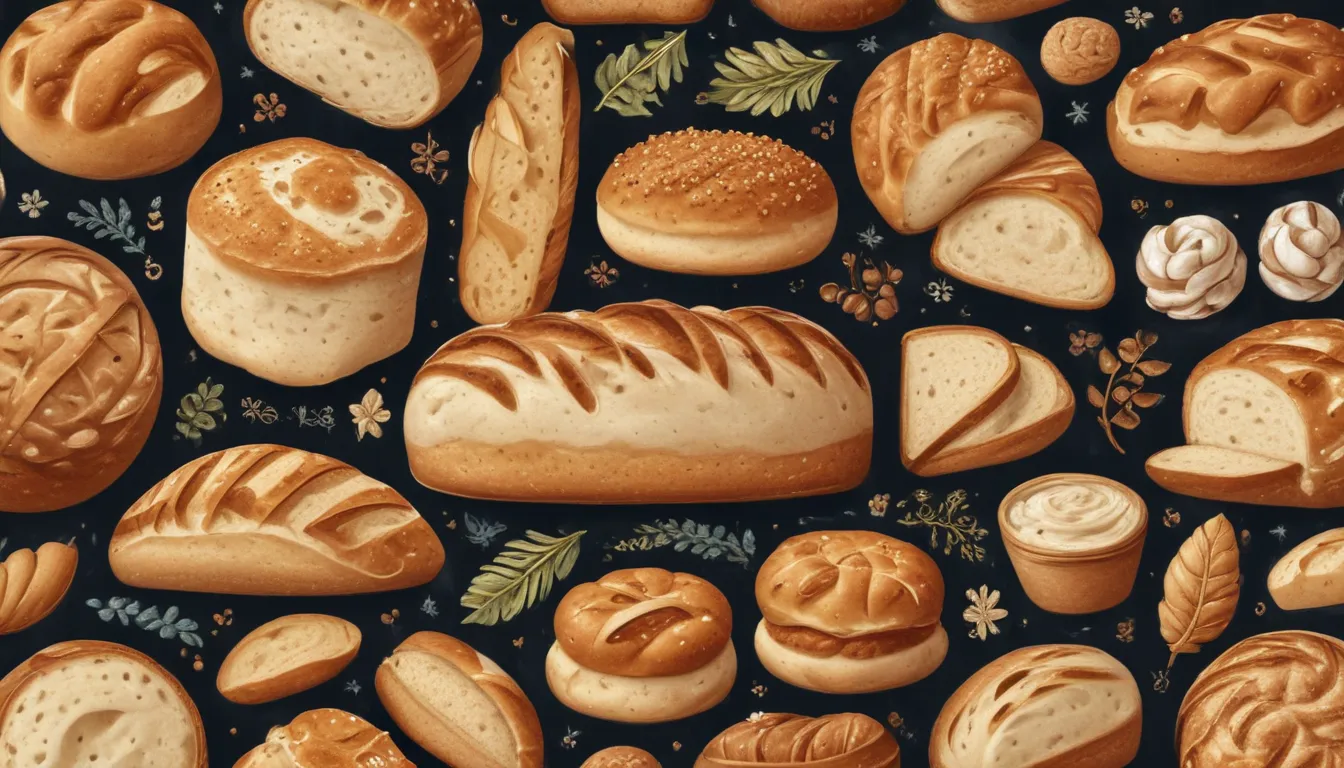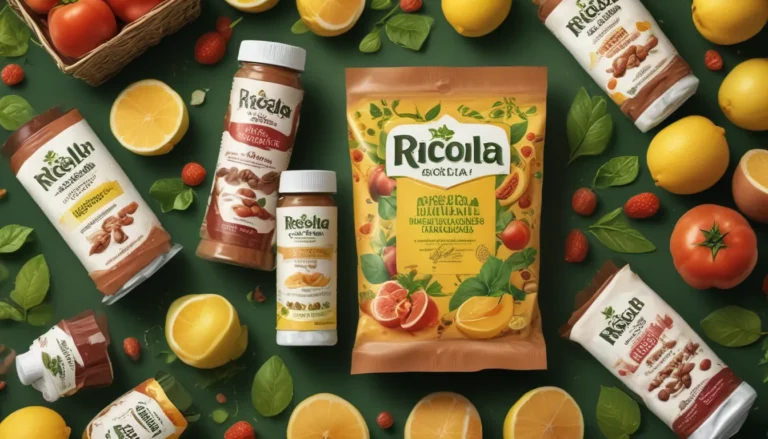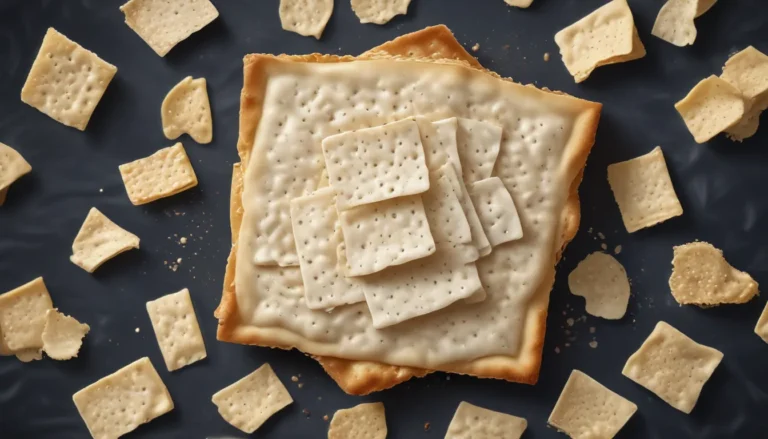The pictures in our articles might not always show exactly what the text is talking about. We use these images to make the article more interesting and eye-catching. They are there to add to the text, but not to replace it or show every detail.
Sourdough bread, with its tangy and delicious flavor, has been a culinary staple in many cultures for centuries. This unique bread has captured the hearts and taste buds of food enthusiasts worldwide. Let's take a deep dive into the intriguing world of sourdough and uncover 12 fascinating facts that make this bread so beloved.
A Journey Through History
Sourdough bread has a rich history that dates back thousands of years. It is said to have originated in ancient Egypt, where natural wild yeasts and bacteria were used to leaven the bread, creating a distinctive flavor and texture that sets sourdough apart.
The Magic of Natural Leavening
Unlike commercial yeast, which comes from a single strain of Saccharomyces cerevisiae, sourdough relies on wild yeasts and lactobacilli for fermentation. This natural leavening process gives sourdough its unique taste and texture that bread enthusiasts adore.
Unveiling the Starter Culture
The secret to making sourdough lies in the starter culture, also known as the “mother dough.” This mixture of flour and water is fermented over time, allowing wild yeasts and bacteria to multiply, creating the perfect environment for bread-making that sets sourdough apart.
Embracing the Tangy Taste
The tangy flavor of sourdough comes from lactic acid produced during the fermentation process by lactobacilli. The longer the fermentation period, the more pronounced the tanginess, adding to the allure of sourdough bread.
Health Benefits for the Win
Sourdough offers a range of health benefits. The natural fermentation process helps break down gluten proteins, making it easier to digest for those with gluten sensitivities. Additionally, it contains vitamins, minerals, and beneficial bacteria that promote a healthy gut, making it a nutritious choice for bread lovers.
The Practical and Delicious Bread Bowl
Sourdough bread bowls are both delicious and practical. The thick, crusty exterior acts as a sturdy vessel for holding soups, stews, and dips, enhancing the flavors of the dish and adding to the culinary experience.
Endless Flavor Variations
Sourdough is incredibly versatile, allowing for a wide range of flavor variations. From classic loaves to savory garlic and herb bread, the possibilities are endless, making sourdough a delightful canvas for culinary creativity.
Artisan Craftsmanship at Its Best
Crafting sourdough is truly an art form. Bakers take pride in achieving the perfect balance of flavor, texture, and crustiness. It requires patience, skill, and a deep understanding of the fermentation process to create the perfect loaf of sourdough bread.
The Slow and Steady Fermentation Process
Unlike traditional bread-making methods, sourdough requires a longer fermentation period. This slow process not only enhances the flavor but also improves the bread’s texture and shelf life, adding to its unique characteristics.
The Labor of Love
Creating a perfect sourdough loaf is a labor of love. From feeding and maintaining the starter culture to shaping the dough and patiently waiting for it to rise, it’s a time-consuming process that requires dedication and attention to detail, but the end result is worth it.
A Global Following
Sourdough has gained a cult following worldwide, with enthusiasts from artisanal bakeries to home bakers embracing the magic and tradition of sourdough bread-making. It has created a sense of connection and community among passionate bakers.
Online Sourdough Communities
Sourdough starter communities have flourished online, bringing together passionate bakers who share tips, recipes, and even their precious sourdough starters. This sense of camaraderie and connection has further enhanced the world of sourdough bread-making.
So whether you're a seasoned sourdough lover or new to the tangy bread scene, these 12 facts about sourdough offer a glimpse into the delightful world of this beloved bread. Happy baking!
Savoring the Unique Characteristics of Sourdough
In conclusion, sourdough bread stands out for its rich history, unique characteristics, and distinct flavor. Its natural fermentation process and tangy taste set it apart from other types of bread, offering a delightful culinary experience. Additionally, sourdough bread provides various health benefits, making it a nutritious and delicious choice for bread enthusiasts.
FAQs About Sourdough Bread
- What is sourdough bread?
-
Sourdough bread is a type of bread made from a fermented dough using wild yeast and lactic acid bacteria, known as a sourdough starter, resulting in its distinct flavor and texture.
-
How is sourdough bread different from regular bread?
-
Unlike regular bread, sourdough undergoes a longer fermentation process, giving it a tangy flavor, denser texture, and chewier crust than bread made with commercial yeast.
-
Is sourdough bread gluten-free?
-
No, sourdough bread is not gluten-free. However, individuals with gluten sensitivity may find that they can tolerate sourdough bread better due to the fermentation process breaking down gluten proteins.
-
Can I make sourdough bread at home?
-
Yes, you can make sourdough bread at home with a sourdough starter, a mixture of flour and water left to ferment over time. With practice and patience, you can enjoy freshly-baked sourdough bread in your kitchen.
-
How long does it take to make sourdough bread?
-
The process of making sourdough bread usually takes 24 to 48 hours from start to finish, including fermenting the starter, rising the dough, and baking the bread.
-
Does sourdough bread have health benefits?
-
Yes, sourdough bread offers health benefits due to its enhanced nutrient bioavailability, aiding digestion and nutrient absorption. It also has a lower glycemic index compared to regular bread.
-
Can sourdough bread be frozen?
- Yes, sourdough bread can be frozen. To maintain freshness, slice the bread and store it in an airtight container or freezer bag before freezing. Simply thaw the slices at room temperature or toast them when ready to enjoy.
Our commitment to providing accurate and engaging content is a testament to our dedication to quality and authenticity. The facts shared on our site are contributed by real users, ensuring diverse insights and information. Trust in our commitment to deliver trustworthy and insightful content as you explore and learn with us.






